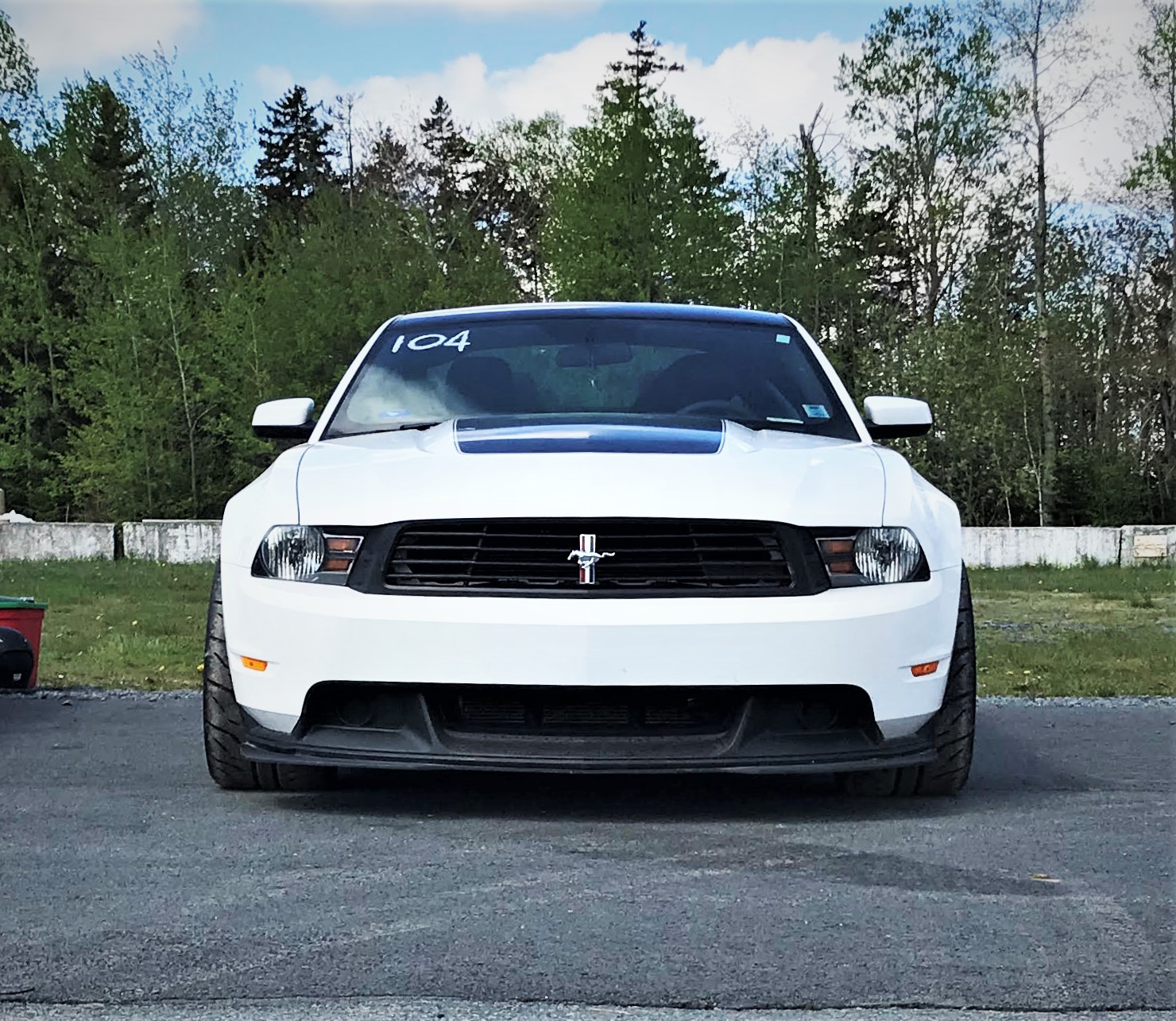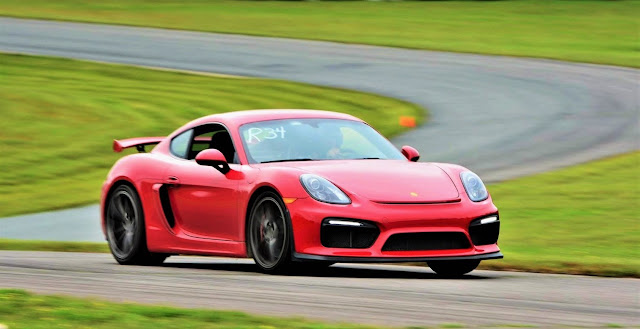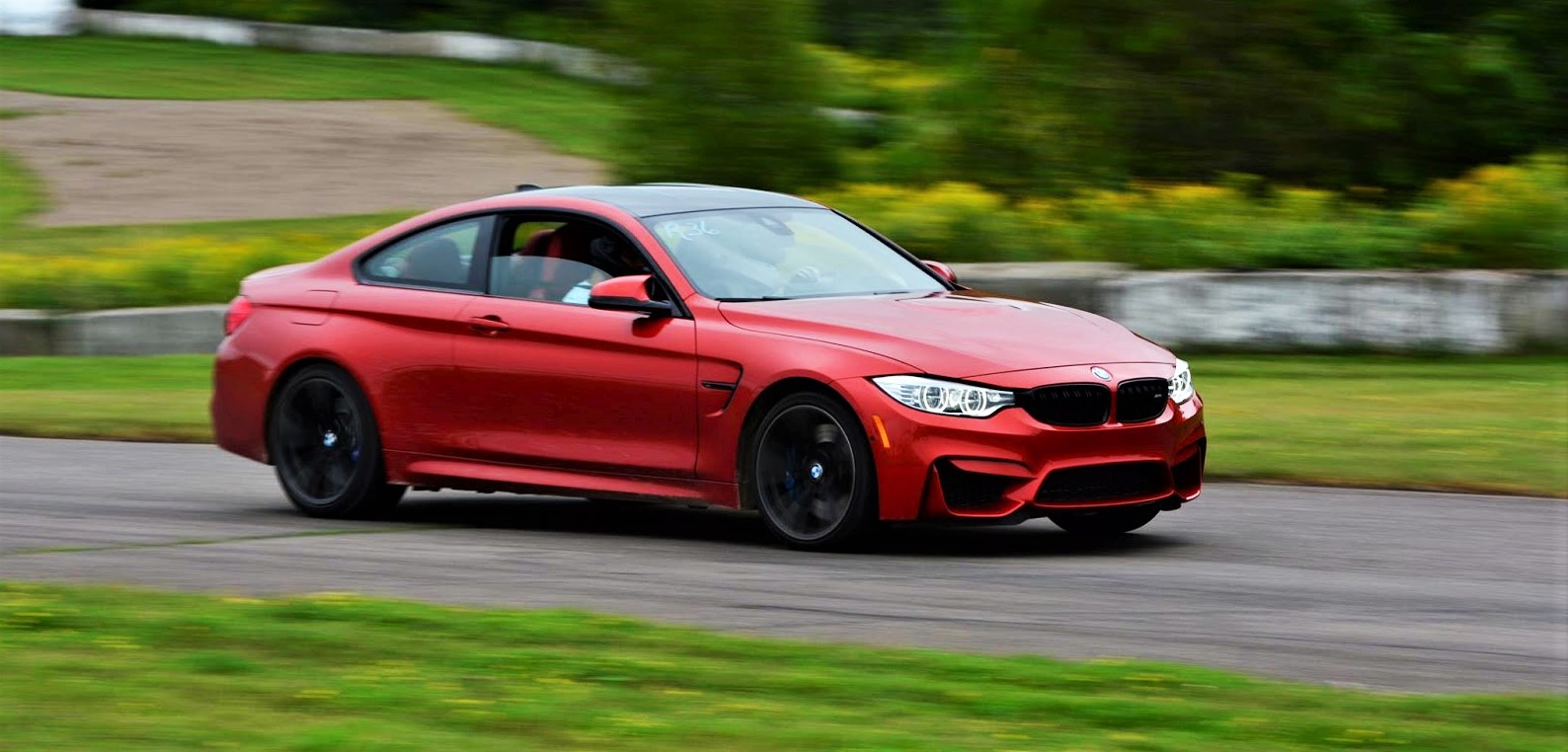The test everyone has been waiting for - the all new 2015 Mustang GT. Let's get straight to the numbers and compare them to the now-last-generation Mustang GT:
2014 Mustang GT 2015 Mustang GT
0-60 mph : 4.4 s 4.4 s
1/4 mile : 12.8 s @ 112.2 mph 12.7 s @ 111.7 mph
60-0 mph braking : 107 ft 110 ft
Average lateral g : 0.96 g 0.96 g
Motor Trend figure-8 : 24.7 s @ 0.85 g 25.0 s @ 0.77
Since the two cars were tested on different days, comparing the exact differences aren't relevant but the conclusion that can be drawn is that the new Mustang GT is not a leap in terms of acceleration. I doubt that the change from the solid axle to an IRS resulted in the small loss in the 1/4 mile ET seen here (0.1 seconds). The 0-60 mph time which is hugely influenced by launch didn't change. If the new car couldn't launch as well in stock trim, it would have shown in the 0-60 mph time. Seeing the two run side-by-side would be interesting for sure, though.
In terms of handling, Motor Trend did not seem too satisfied with it, saying: "the 2015 Mustang didn't feel as nimble or competent as the Boss; it didn't feel like the front and rear ends were talking to each other. Turning in off-throttle resulted in moderate push (understeer from the front end), which needed to be corrected with the throttle. This, in turn, caused a bit of slushy oversteer that, while manageable, slowed the GT down a bit. While that's not bad per se, we were expecting a bit more from the new IRS-equipped Mustang."
Car and Driver, however, had almost the exact opposite opinion: "untying the Mustang’s rear wheels from each other pays massive dividends in terms of impact mitigation and keeps the front and rear ends working more closely together. Setting the Mustang into a corner no longer puts you into the awkward situation of serving as a couples’ counsellor to the fore and aft axles. Turn-in felt natural in the outgoing Mustang, but the rear end seemed slightly disconnected, as if it wasn’t sure it wanted to follow the front. Cornering is now secure and flat, and the grip likely approaches a full 1.00 g with those sticky P Zeros. The new Mustang’s chassis is in total harmony."
The take away for me is that you're going to have to test drive one and decide for yourself about the handling. The one point that all reviews agree on, and it was expected, is that ride quality on the road is certainly improved. Interestingly, (in Motor Trend testing) the average lateral g on the skidpad is identical between the 2 cars at 0.96 g but on the figure 8, there is a difference of 0.08 g plus going 0.3 seconds quicker. The cause of this, I suspect, is better transitional response either due to the IRS or the rear end wobble that plagued the S197 in stock trim due to being underdamped from the factory (which could again be linked to the solid axle). However, what is obvious and has been to many people, going to IRS does not automatically make the car leap forward in terms of handling capability. A well set-up solid-axle can go head-to-head with an IRS-equipped car, the ride refinement and quality is what suffers.
What seems to be the biggest problem (and has certainly upset quite a few people on different forums) is the added weight. At 3,814 lb., the car has gained as close as makes no difference, 200 lb. compared to the outgoing car. This is not only a significant jump, it also puts it within a stone's throw away from the current (5th gen) Camaro SS which has been criticized since its introduction for being overweight and is bound to lose a few pounds when it moves over to the new Alpha platform underpinning the lightweight (for their respective classes) Cadillac ATS and CTS.
After a long period of teasing and many rumours about the Mustang losing 200-300 lb., this was especially a huge disappointment to many. However, I did not expect the car to lose more than a 100 lb. The reason being is the C7 Corvette. Although the chassis lost nearly 100 lb., due to the added safety and infotainment tech that todays market demands, the car gained weight overall. Chevrolet was smart about putting a number to the effort, saying that the chassis alone is that much lighter than the outgoing one.
Personally, I am disappointed due to the large weight gain but I suspect a base Mustang GT with just the performance options would be closer to 3,700 lb which, while still high, isn't that much higher than the last generation. I have no doubt that the new Mustang chassis (S550) is lighter than the outgoing one but with all the added tech, it was bound to at least stay the same. I think the Mustang's entry into Grand-Am (Tudor now) will be a good indication as I'm sure it will be lighter than the most recent S197 entry, the Boss 302R. I hope I start seeing them at the local track as it would be fun to go up against one in my car (a 2012 Boss 302).
What do you think about the new Mustang? Did it disappoint, pleasantly surprise or meet your expectations? Sound off below!














My husband has always told me he wanted a Mustang. We have a one year old son, though and we need a family car. We ended up getting a Dodge Caliber. It is perfect for our little family. He still swears he is going to get his Mustang, though. I told him in another decade maybe.
ReplyDeleteKourtney @ Thomas Sales and Service Ford